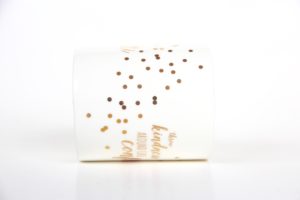
A DIFFERENT WAY OF THINKING
Dyslexia literally means ‘trouble with words’. It is a term used to describe difficulties with reading, writing, spelling and mathematical symbols. It has now been sub-sectioned into many different labels such as dyspraxia, ADD, ADHD, visual-spatial learners, central auditory processing disorder, visual processing disorder, dysgraphia, dyscalculia, processing disorders, and so on. Although these labels are usually regarded as separate from one another, the underlying symptoms can result from the same thing: “disorientation”.
Disorientation is at the root of most learning difficulties. Dyslexia is not a “disease” which needs a cure. It is a product of thought or perception (a different way of thinking), and results in a special way of reacting to confusion. This perceptual thinking works very well in the 3D world… but leads to confusion in the 2D world of symbols and print. Perception, however, can be corrected.
“Dyslexic people have achieved in many walks of life because of this gift, not in spite of it”
When teaching reading, a phonetic method is often used. Dyslexics, however, are less likely to think with the sounds or shapes of words. They are more likely to think with pictures or mental images in a creative and multi-dimensional way that benefits from hands-on learning. When confused, someone with dyslexia will become disoriented, and thought is perceived as reality. Dyslexics are able to see, hear, feel and sense what they imagine as though it is real.
This is why they may skip, substitute, transpose or make up words, become easily distracted, or flip letters around. When equipped with the right tools, people with dyslexia can automatically control and correct their perceptions and avoid the disabling aspects, allowing their gifts or talents to shine through.
WHAT IS THIS GIFT?
The ability to see mental images from many perspectives is actually a natural talent.
However… this natural 3D ability in the wrong 2D environment, such as in certain school or work settings can become a liability.
The following gifts and abilities are shared by picture thinkers
• They can use the brain’s ability to alter and create perceptions
• Highly aware of their environment
• More curious than most people
• They think mainly in pictures instead of words
• Highly intuitive and insightful
• They think and perceive things multi-dimensionally – using all senses
• The ability to experience thought as reality
• Very vivid imagination
At the heart of Dyslexia is a creative talent. This talent is an asset for various activities and can improve and enhance a person’s performance in:
• Music/dancing
• ’Reading’ people
• Engineering and mechanical arts
• Strategic and fiscal planning
• Inventing – ideas generation
• Drama – role-playing – storytelling
• Designing – Art
• Manual skills
• Sports and adventure
You can find people with Dyslexia in every field and from all walks of life.
Artists – Actors – Athletes – Authors – Designers – Inventors – Scientists – Entertainers – Architects – business people – Builders – Carpenters – Strategic planners – Financial Advisors – Entrepreneurs

Dyslexia only becomes a “disability” when uncorrected distortions occur, creating confusion and conflicting information which cannot be processed clearly
DISCOVER THE GIFT
REQUEST A CONSULTATION
It’s time to take care of your abilities! Let me know a good time to call you – Jayne






